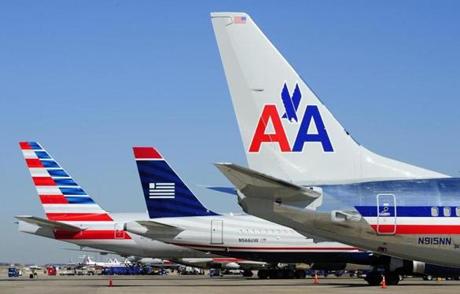Originally Posted on The Huffington Post
By Dane Steele Green
“Mergers and acquisitions.” Otherwise called M&A. Two letters that are music to Wall Street’s ears. Few events can set the financial world on fire like an “M” or an “A,” so much so that banks, investment houses, and watchdogs have whole departments dedicated to the phenomenon. There’s money to be made in mergers and acquisitions, and no more so than when two big players, like U.S. Airways and American Airlines, join forces this year. Wall Street practically flipped at the news.
But that’s Wall Street. What does the merger of two major U.S. carriers mean for the rest of us?
Some questions are easy to answer. The US Airways-American Airways combo results in a company worth $11 billion — nothing to sneeze at. US Airways, ailing for years, will cease to be. Your frequent flyer miles will be safe, and as far as what alliance the new entity will join, that’ll be Oneworld. Other questions are still up in the air: The name of the new carrier will probably, though not necessarily, be “American Airlines,” and the elite status of the new carrier will most likely mirror the four-level system of US Airways. These details are still being hammered out (the merger isn’t finalized until October).
The long-term repercussions are hazier. By this, I mean fares. Both US Airways and American Airlines say they will not increase, which between you, me and the world population would be a spectacularly singular occurrence since it would go against every last historical president the industry, or any industry, has set. If I were a betting man, I would bet on fares going up. Again.
And I am not the only one. Ryan Radazzo, writing for AZcentral.com, refers to a study commissioned by the non-profit Consumer Travel Alliance (CTA) that sees the possibility for consumers to get hit in the wallet, particularly with the regard to routes where the two companies had been the sole providers/competitors.
Charlie Leocha, CTA Director, said in a statement, “Consequences to airline competition could be dramatic. Far from being an all-but-benign combination of airline routes, this merger has the potential to clobber competition in hundreds of markets across the country.”
How do “clobbered” companies stay in the black? They pass price increases on to the consumer. It’s an old story. The airline industry is notorious for nickel-and-diming, but to be fair, this isn’t always because an executive dawned on something new to charge. As we have already seen in the automotive industry, the rising price of fuel was going to hit consumers in one way or another. However, add to fuel cost the fact that thanks to 9/11 and the Great Recession, the U.S. airline industry has fewer players on the board keeping each other in check. Combined, this creates the perfect environment where individual carriers have much more leeway to increase fares, mergers be damned.
And even if fares remain stable, at least in the short term, that doesn’t mean airlines can’t wring out a profit in other, subtler ways. Cleveland, St. Louis and even Las Vegas all lost service after airline mergers. US Airways CEO Doug Parker promised Charlotte, SC, a major nexus of US Airways, will see no change, but was noticeably more reticent when it came to, say, Philadelphia.
Interestingly, the usual culprits that do in mega-deals are absent this time around. The merger itself faced no serious hurdle and is supported by both airlines and their associated unions; as transactions go, this one was a snap. This leaves the ball in the hands of consumer advocates and a U.S. Senate subcommittee on antitrust issues, which always convenes on business mergers of this scale.
Competition is the foundation of the U.S. economy; if there isn’t enough of it, the government can halt mergers, or even split companies, such as it did with the Bell Operations telephone monopoly in 1982.
“There are definitely routes where competition will be severely limited,” Diana Moss, director of the American Antitrust Institute, said at Senate hearing, but that being said, analysts and advocates aren’t particularly optimistic. Considering Washington has OKed the last three airline mergers, chances are this one will go through, no fuss.
So it will fall to you, the consumer, to do your research. Not only one websites like Expedia and Orbitz, but with the carriers themselves and travel providers such as myself. I know it sounds grim, but remember that until the US Airways-American Airlines deal is finalized, everything I mentioned in this article is testimony, speculation and hypothesis on what might happen. And whatever happens, the fact is that the deals are out there; you just have to put in a little more effort to find them. And in the end, there is always Amtrak and Greyhound.
Steele Luxury Travel
www.SteeleTravel.com

